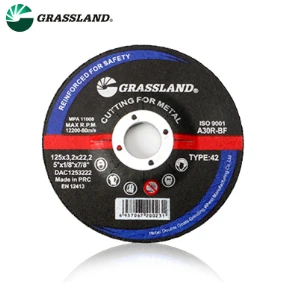Understanding Angle Grinder Cutting Wheel Types
Angle grinders are versatile tools that can be used for a variety of applications, including cutting, grinding, and polishing. One of the essential components that determine the tool's efficiency and performance is the cutting wheel. With a variety of options available, it’s crucial to understand the different types of angle grinder cutting wheels to choose the right one for your specific task.
1. Type of Material
The first consideration when selecting a cutting wheel for your angle grinder is the type of material you will be working with. Different materials require different types of wheels. The most common materials include
- Metal Cutting Wheels These wheels are specifically designed for cutting ferrous and non-ferrous metals. They are typically made from aluminum oxide or zirconia, providing a sharp cutting edge that withstands the heat generated during cutting. - Concrete and Masonry Wheels For cutting hard materials like concrete, brick, or stone, you need specialized diamond blades. These wheels have diamond segments embedded in the edge, enabling them to cut through extremely tough materials effortlessly.
- Plastic and Composite Wheels Cutting wheels designed for softer materials like plastic and composites feature a different formulation to prevent melting and warping.
2. Wheel Composition
The composition of the cutting wheel greatly influences its durability and performance. Here are some of the common types
- Aluminum Oxide Wheels These are among the most widely used cutting wheels due to their effectiveness for general metal cutting applications. They are cost-effective and suitable for various materials, including ferrous metals.
- Zirconia Alumina Wheels These wheels are more durable than aluminum oxide wheels and are designed for tougher applications. They are suitable for cutting stainless steel and other hard metals.
- Diamond Wheels For cutting harder materials like concrete and ceramic, diamond wheels are the best choice
. They offer high cutting efficiency and a longer lifespan compared to abrasive wheels.3. Thickness of the Wheel
angle grinder cutting wheel types

The thickness of the cutting wheel also affects its performance. Thicker wheels are more durable and suited for heavy-duty cutting tasks, while thinner wheels are ideal for quick and precise cuts. When selecting a wheel, consider the balance between thickness and cutting speed required for your project
- Thin Wheels (1/16 inch) These are perfect for making clean, precise cuts, especially in metal and are commonly used in fabrication work.
- Thicker Wheels (1/8 inch or more) These wheels are more robust and can withstand heavy pressure, making them ideal for cutting through thick materials.
4. Diameter of the Wheel
Angle grinder wheels come in various diameters, typically ranging from 4 to 9 inches. The diameter you choose will depend on the size of your angle grinder and the nature of your work. A larger diameter allows for deeper cuts, but it may also be less manageable for small, precise jobs.
5. Special Features
Some cutting wheels come with special features that enhance their performance
- Reinforced Wheels These wheels have additional layers of material that provide extra strength, making them suitable for heavy-duty applications.
- Grit Ratings The grit rating indicates how fine the abrasive particles on the wheel are. A lower grit number means a coarser wheel, while a higher grit number refers to a finer surface, affecting the quality of the cut.
Conclusion
Selecting the right angle grinder cutting wheel is essential for achieving optimal results in any project, whether it’s metal fabrication, tile cutting, or remodeling. By understanding the various types of wheels and their specific applications, you can make an informed decision that maximizes efficiency and minimizes effort. Always remember to use the appropriate wheel for your material to ensure safety and effectiveness in your grinding or cutting tasks. Investing time in choosing the right cutting wheel will not only enhance your work quality but also prolong the life of your tools.
Post time:Dec - 03 - 2024

















